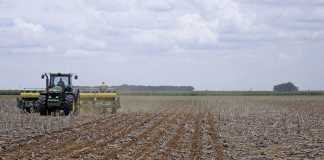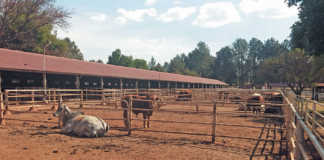Phosphorus (P)is an essential nutrient in the diets of livestock, being an energy source in all metabolic pathways. In particular, it is important for bone growth and in breeding animals where skeletal strength and longevity are key parameters affecting performance. In growing animals, it significantly affects both growth rate and feed conversion.
It is a straightforward task to calculate the P requirements for specific livestock and then add sufficient inorganic P to the diet to meet these. However, this strategy is coming under close scrutiny for several reasons:
- Inorganic P is obtained from inorganic phosphate, which in turn is mined from phosphate-bearing rocks. Global phosphate prices are rising and becoming increasingly volatile.
- Phosphate is indispensable for global agriculture and a shortage could affect future food supply.
- Inorganic phosphate sources vary in composition.
- Adding inorganic P adds to livestock’s contribution to pollution.

Phytases assist monogastric digestive systems to utilise the organic phosphorus found in the phytic acid of livestock feed. Photos Courtesy of DSM
The logical alternative is to increase the utilisation of organic P already present in feed ingredients. This would allow a reduction in inorganic P supplementation, leading to lower feed costs and reduced pollution risk without compromising performance. It is estimated that 25% to 100% of the phosphate added to animal diets could be saved by using naturally occurring plant P more effectively.
The phytase response
P is present in all the principal feed ingredients in quantities sufficient to maintain good levels of animal performance. Unfortunately, much of this P is in the form of phytic acid, and is largely unavailable to monogastric animals because they lack the phytase enzymes required to release the P from the acid. Consequently, a great part of the P naturally present in the diet of monogastric animals is excreted undigested. This limits animal performance and creates environmental problems, particularly freshwater pollution.
Phytases are digestive enzymes that improve the utilisation of organic P in feed ingredients by hydrolysing and releasing the phosphate groups from the phytic acid, making the P available to the animal. The more phosphate released, the more can be utilised by the animal. Phytic acid is also known to have other anti-nutritional effects, in particular reducing the digestibility of protein and starch. Phytase’s ability to hydrolyse the acid enhances energy and protein utilisation, helping to improve growth and feed conversion, and reducing nitrogen pollution.

At current consumption, inorganic phosphate reserves could last 350 years. However, the fertiliser industry predicts that today’s annual consumption increase of 4% will continue, reducing the years left and increasing feed prices. Courtesy of Agristats and DSM.
An evolving technology
The recognised strategy for formulating P levels in diets is to add phytases in order to calculate the organic P available and reduce inorganic P levels accordingly. Exogenous phytases have been available for about 20 years and during this time a range of products has been synthesised from bacterial and fungal sources.

With phosphate prices rising, farmers would be wise to maximise the use of organic phosphorus sources in feed.
Most phytases – bacterial and fungal – are effective across the typical pH range in the gastro-intestinal tract, while several are formulated to remain stable at the high temperatures experienced in feed processing. Ongoing research has resulted in the development of high activity phytases that perform better than ‘traditional’ phytases, offering more efficient P release, increased reliability and greater consistency.
Choosing the right phytase
With a range of phytases available, the only way to ascertain the true efficacy of each is through in vivo studies. The basic question is: does the enzyme reach the animal and deliver the results? Phytase performance is affected by formulation, feed processing and phytase characteristics. An in vivo study takes all these into account.

Through the use of phytases, farmers can access Phytin-P as an organic phosphorus source instead of relying on costly, non-phytase phosphorus (NPP). Courtesy of Geflügel-jahrbuch 2010 and DSM
Other questions to consider are:
- How much P release is needed?
- How much P can be released using a new high activity phytase compared with a traditional phytase?
- What is the cost of inorganic P and what are the potential additional benefits of high phytate breakdown?
- What is the product’s stability in a variety of feed processing and storage conditions?
- Does the product go beyond standard nutrient release?
- Can it generate higher pay-back than standard dosing?
- Is the data based on in vivo results under commercial conditions?
With the price of feed ingredients rising inexorably, it makes business sense to maximise nutritional uptake in feeds. Adding phytases to a diet is a significant step to achieving this, and offers numerous benefits for the feed manufacturer and producer.













